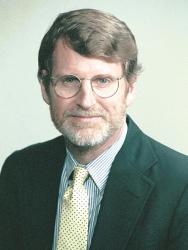The Brookings Institution is committed to quality, independence, and impact.
We are supported by a diverse array of funders. In line with our values and policies, each Brookings publication represents the sole views of its author(s).

Research
BPEA | Spring 2006
Spring 2006
THE LABOR FORCE PARTICIPATION rate is defined as the percentage of the
noninstitutional working-age population (those aged 16 and over) reporting
themselves as either working or actively looking for work. This statistic
is constructed from data collected as part of the Current Population
Survey and published monthly by the Bureau of Labor Statistics (BLS).
Its longer-run trend is an important determinant of the supply of workers
to the U.S. economy. For much of the past four decades, the participation
rate has trended upward, rising from less than 60 percent in the early 1960s to
more than 67 percent by the late 1990s. However, after peaking at 67.3 percent
in the first quarter of 2000, the participation rate fell steadily to under
66 percent by early 2005 and has edged up only to just above 66 percent
since then.
